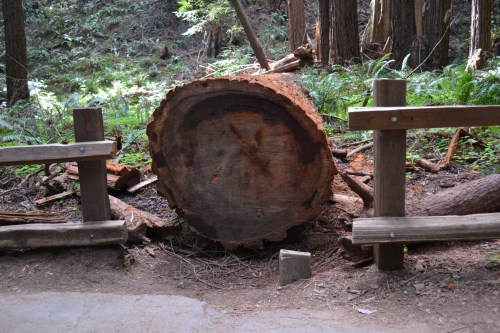Summer Solstice, the longest day of the year and the beginning of summer, occurs on June 20, 2016, at 22:42 Universal Time (6:42 p.m. on the U.S. east coast, 3:42 p.m. on the west.) Throughout the Northern Hemisphere, it can be marked by Midsummer festivals, especially in Scandinavia, where people celebrate with maypoles that honor nature’s bounty and bonfires that recall the heat and warmth of the sun. Still other cultures have solstice rituals that honor the sun, the feminine and the masculine.
This is also the first Summer Solstice to coincide with a full moon since June, 1967, the Summer of Love. The next full Summer Solstice moon won’t happen until 2062. (Read more about the full moon below.)
Here in the San Francisco Bay Area, my family often attends a summer solstice celebration at Muir Beach, hosted by the Muir Woods National Monument park rangers. We enjoy a bonfire, nature storytelling and campfire songs, and a ritual walk around the fire, holding stalks of sweet flowers and herbs, and then throwing them into the fire, to greet the new season and also let go of anything that no longer serves us.
View more photos of summer solstice at Muir Beach.
Full Strawberry Moon
This is the first full moon on a summer solstice since June, 1967.
People in many cultures throughout history have named the year’s full moons based on the activities that happened during them. The Farmers Almanac calls the June full moon the Strawberry Moon because, for the Algonquin Native Americans, June was synonymous with strawberries. The Cherokee called the June full moon the Green Corn Moon. The Choctaw referred to it as the Windy Moon. Celtic people referred to the June full moon as the Moon of Horses. Throughout much of more modern Europe, the June full moon was known as the Rose Moon, for that flower’s peak.
I’ve long been quite entranced with the full moon names and their variations. Of course, they reflect both the need to mark passing time and the way that time was experienced by people who were living close to the land. Lunar time-keeping pre-dated our modern calendars (and some calendars, like the Jewish and Chinese calendars, are still lunar-based.) The Farmer’s Almanac has a good list of Native American full moon names and how each came to be.
Other, even older, cultures have had moon naming traditions, too. Learn the full moon names from Chinese, Celtic, Pacific Island, Native American, Pagan, and other cultures.
Full Moon Gardening
Lots of people garden using the phases of the moon. The good news is that there isn’t one best time to plant — Each aspect of planting has an associated moon phase, based on how much moisture is pulled up through the soil by the monthly pull of the moon (much the way the moon influences the tides.)
The time just after the full moon is an especially good time for planting root crops, as the gravitational pull is high (adding more moisture to the soil) and the moonlight is decreasing, contributing energy to the roots. For this reason, the waning moon is also a good time to plant bulbs and transplants.
The Farmer’s Almanac offers a wonderful moon phase calendar for the U.S. that allows you to plug in your location and get the exact time of your local full moon.
Summer Solstice Cupcakes
These fun cupcakes offer a visual and yummy way to celebrate Summer Solstice. The recipe comes from the terrific book, Circle Round:
Just as Winter Solstice gives birth to the light, Summer Solstice, with its day that never seems to end, holds the seeds of darkness. We discover darkness in the bits of chocolate concealed inside this sunny cupcake.
1/2 C butter (one stick) softened in the summer sun
1 C sugar
2 eggs
1 t. vanilla extract
2 C flour, sifted first and then measured
pinch of salt
2 t. baking powder
1 C milk
1 C chocolate chipsCream together the butter and sugar until light and fluffy. Beat in the eggs one at a time. Add vanilla. Mix together the flour, salt, and baking powder. Add half of the dry ingredients to the wet mixture and stir in. Follow with 1/2 cup milk, then the other half of the flour mixture and the rest of the milk. Stir in the chocolate chips.
Use paper liners, or grease and flour cupcake tins. Bake for 25 minutes in a preheated 375′ oven.
Makes 20 to 24 cupcakes.
Because of the sweetness of the cake and chips, these don’t need frosting, but you can certainly add it, in a solid color or a cheery sun or flower design.
This is a great explanation of how Summer Solstice works. Happy Winter Solstice to those in the Southern Hemisphere, who are marking the lengthening days. Perhaps chocolate cupcakes with white chocolate chips are in order?
Happy Solstice and Strawberry Full Moon to all!
These activities are adapted from Fed Up with Frenzy: Slow Parenting in a Fast-Moving World, which contains 300+ more fun family activities.
Photos: Susan Sachs Lipman
Other Slow Family Posts you may enjoy:
Slow Nature: Keep a Moon Diary
Slow Down for Summer: Fun and Simple Outdoor and Seasonal Activities









































































































